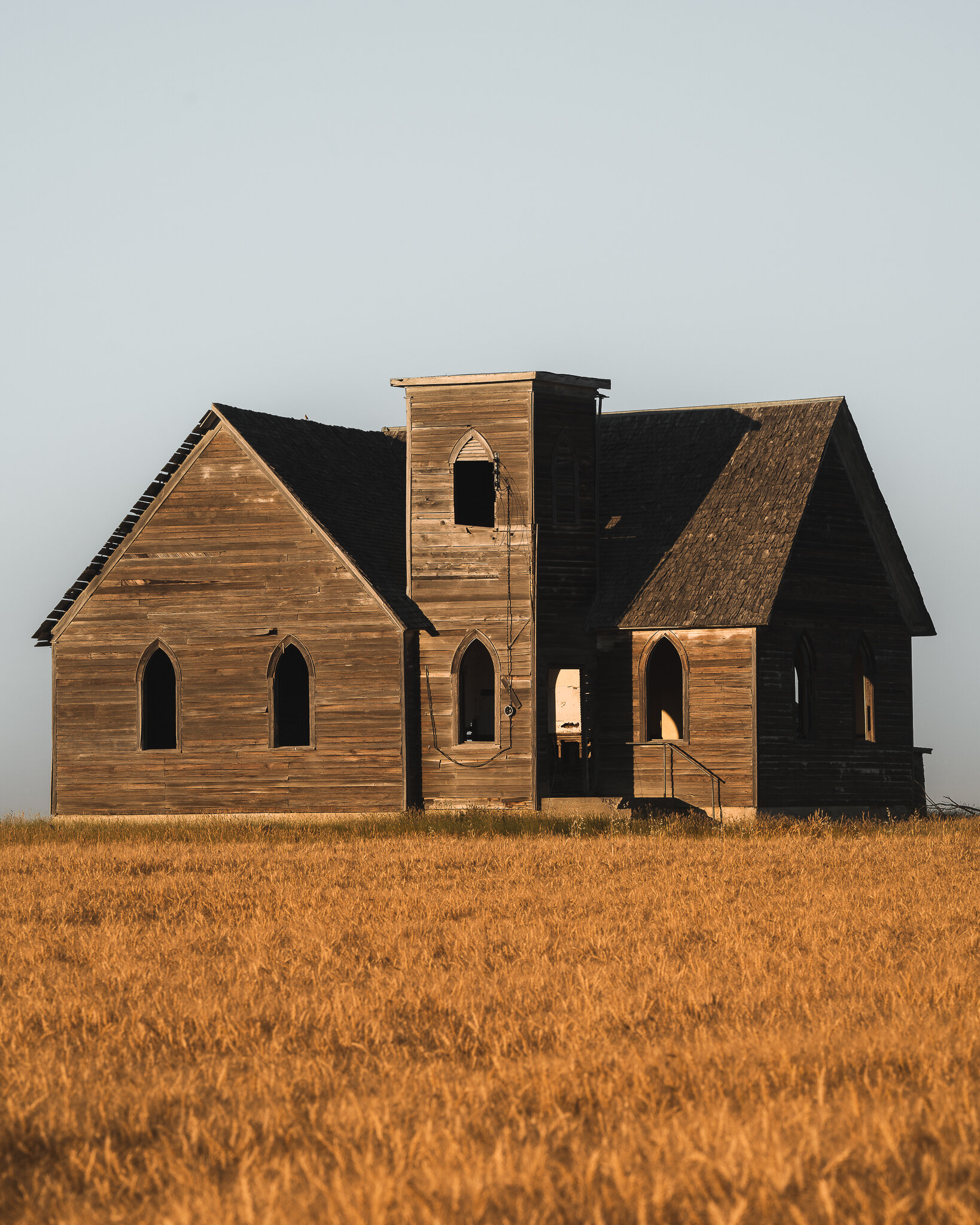Montana Hi-Line
In the late summer of 2020, we decided to pack the pups in the truck and take a road trip from coastal Oregon to northern Montana to visit a dear friend. Winding our way through the forests and mountains of the first three states, we eventually exited the area south of Glacier National Park where the mountains opened up to the vast big sky country of central Montana. The contrast of this wide-open landscape to our mountainous home was mesmerizing and random structures standing alone high above the plains soon became a new obsession.
Lone structures juxtaposed against wide open spaces are trademarks of the Homestead Era. The westward expansion across the United States began with the first Homestead Act of 1862 and further Acts extended this era over the next century. These Acts promoted the settlement and farming of public lands by any US citizen with the benefit of eventually owning the deed to that land if improvements were made.
Northern Montana, along the Hi-Line which runs from North Dakota in the East to Glacier National Park to the West, just happens to host many of these historical relics. This section of Montana has expansive prairies, endless fields of wheat, large herds of antelope, towering mountains in the distance and a plethora of big sky. Vast remoteness encapsulates the sheer beauty of this region and warm summer sunsets often give way to a breathtaking view of the heavens in the late evening. Northern Lights dance across winter skies and shooting stars have free rein throughout the summer nights.
Many structures from this period focused on the settlement of the empty lands: schoolhouses, places of worship, farming structures and homes. Today, the remnants of these iconic landmarks stand on their last legs representing ghosts of days gone by.
Turning off Highway 2 and exploring the vast network of gravel roads that run all the way to the Canadian border make for great adventures. Many of these structures make for unique images and capture a period of history that may soon be lost forever. This story will focus on an area surrounding the small hamlet of Havre, MT.
Cottonwood Church - circa 1915 with refurbishments made in 1922.
Cottonwood Church
In 1922, the Cottonwood Lutheran congregation purchased the Presbyterian Church on the Wild Horse Trail near Havre. After improvements were made, it was rededicated as the Cottonwood Lutheran Church on June 24th. Regular services were held until 1951 with the exception of the dangerously frigid winter seasons. The church was ultimately abandoned in 1953 after many congregants moved to the new facility in Havre and the structure has since stood in pastureland as a reminder of the early 20th century along gravel Road 150 N, just West of the Wild Horse Trail.
Milk River Valley Church - circa 1915
Milk River Valley Church
Constructed in 1915 and formally opening its doors in 1918, the Milk River Valley Church now sits quietly among the expansive wheat fields Northeast of Gildford. Upon our arrival, a giant great horned owl took flight from the old bell tower and headed for open field. Likely surprised by infrequent visitors, it was a sight to behold during the beautiful golden hour that summer evening.
The history of this church was short lived. A major drought during 1917 and the resulting decline of farm prices thereafter throughout 1925 led to many homesteaders abandoning their properties for a more hopeful future elsewhere. Many of the small communities, farms and churches never recovered.
Christler Homestead - circa 1922
Christler Homestead
A lonely stone chimney rises up above a wheat field just South of Havre along Beaver Creek Road. The story behind this sentinel is shrouded in mystery, but questions lingered. Further research revealed the home built around it had never been lived in and burned to the ground before it was ever occupied. One evening in October of 1922 its owner, Leonard J. Christler, was murdered by an infatuated lover. Although a respected man of the church and community, scandal appeared to have follow him from back East in New York until he finally met his end out West.
Christler’s story told a sordid tale involving a love triangle, deceit and ultimately murder, but the chimney stands alone among the wheat today as a reminder of this scandalous affair during the early twentieth century.
Fresno Reservoir Homestead
Fresno Reservoir
An old homestead rests on the West side of Fresno Reservoir Road just South of the reservoir. Although much research was conducted, detail about this solitary home on the prairie was lacking.
In Conclusion
Should you ever find yourself on a road trip in this region of the country, be sure to seek out a few of these ghosts from the past. Some appear just off the hi-line and other gems must be researched and are only found off the beaten path.
Wild herds of antelope are sure to lift their heads as you drive down the lonely dirt roads. These structures have amazingly stood for over a century, but no one knows how much longer they will remain. There is no time like the present to enjoy and appreciate these ghosts of days gone by.




